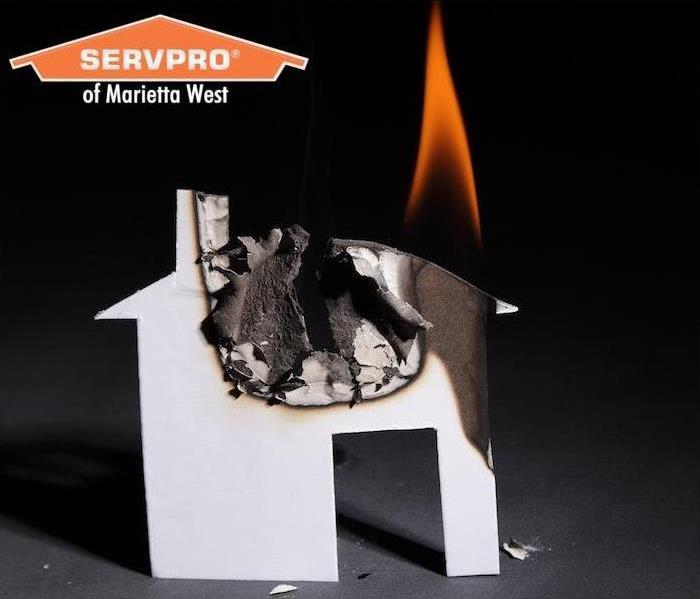The 4 Crucial Elements of Fire & How to Counteract Them | SERVPRO of Marietta West
1/26/2022 (Permalink)
 If your home or business has any damage, SERVPRO of Marietta West is ready around the clock to help you recover.
If your home or business has any damage, SERVPRO of Marietta West is ready around the clock to help you recover.
There’s a three-dimensional triangle shape called tetrahedron you may recall from middle school geometry, which scientists and fire agencies also use to represent the way first get started.
This visual aid, called the fire tetrahedron, shows us the four essential elements of a fire, and gives us insight into how those elements can be used against a fire to bring about its end.
The 4 Things a Fire Needs to Live
Fuel - Fires are hungry little monsters, and the first thing they need is something to eat. Fires can consume most anything, organic materials or otherwise, provided these other elements are in place.
Heat - Burnable materials all have a thermal point at which they become prone to ignition. Some materials reach this point more quickly than others, which make them all the more dangerous as far as fire safety is concerned.
Oxygen - Fires, like humans, have to breathe—at least in a manner of speaking. Fires suck the oxygen from the atmospheres in which they burn, allowing them to continue to grow and simultaneously creating carbon monoxide hazards for people nearby.
Chemical Chain Reaction - These elements all work together in a chain reaction, which perpetuates the growth of the fire until something steps in to put a stop to it. But the elements which start a fire and keep it growing can also be used to undo it.
The 4 Ways to Stop a Fire
Cool It - This can be done in several ways, but the most common and most effective is by water. Restoring a thermal balance to the fuel the fire is consuming keeps heat levels under their combustion threshold.
Smother It - Something as simple as putting a lid on a candle or pan fire can deprive the fire underneath of the oxygen it requires to survive. This is how “stop, drop and roll” works, too.
Starve It - When the pantry is empty, so to speak, a fire gives up. When there’s no more wood or other material to eat, the fire simply has no reason or ability to keep going.
Interrupt the Chain Reaction - A fire can be tripped up by the entry of an outside chemical or gas that breaks up the reaction. If the reaction is adequately disturbed, the fire stops. A gas called halon is quite good at this, but it was found to have a negative impact on the environment and thus has been banned from production.
*If the fire tetrahedron makes a wreck of your home or business, we’re ready around the clock to help you recover. Contact SERVPRO of Marietta West at (770) 428-5467 at any time for fast, thorough cleanup and recovery after a fire or visit www.SERVPROmariettawest.com for more information on our commercial or residential fire restoration services.






 24/7 Emergency Service
24/7 Emergency Service